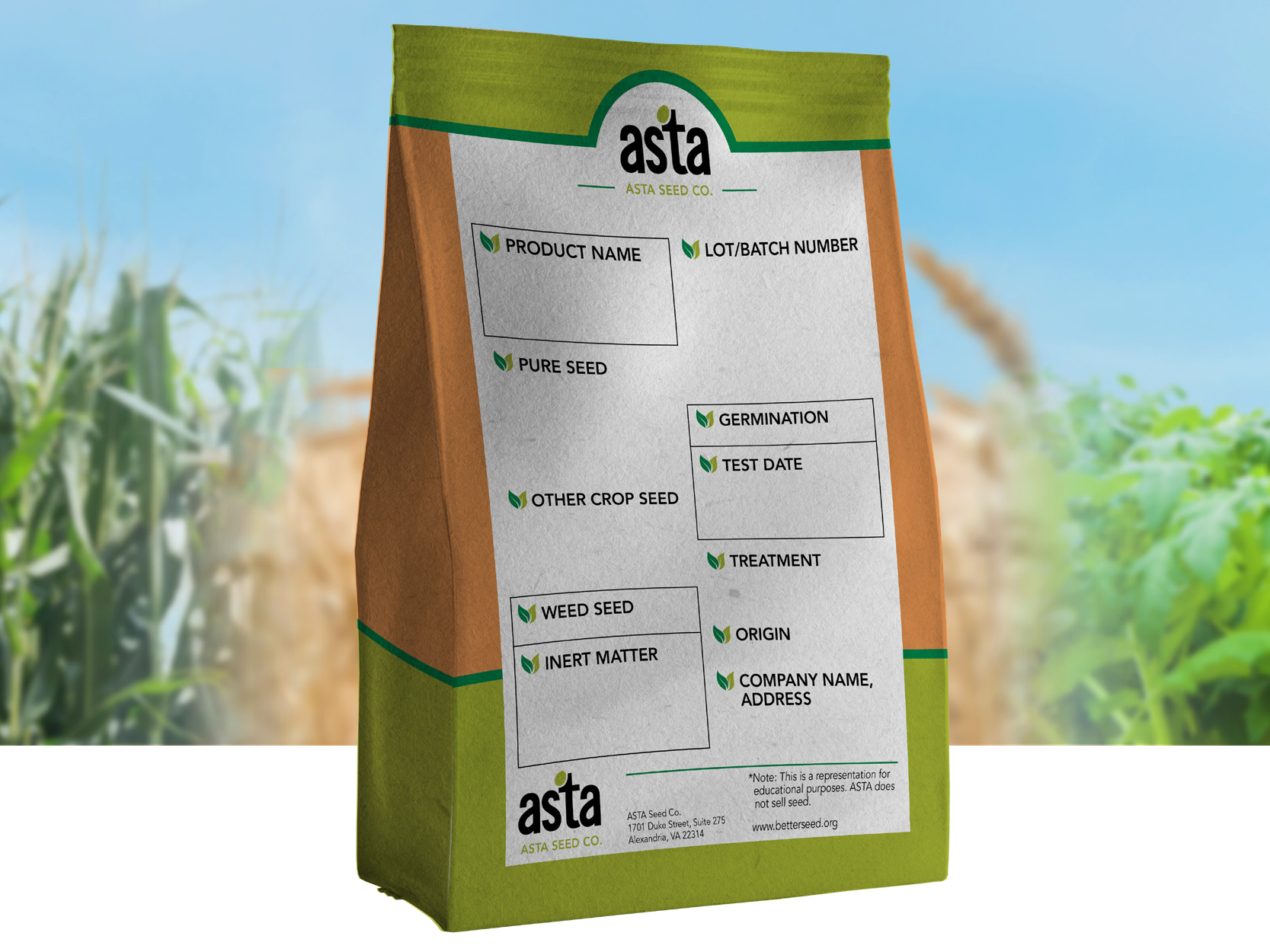Seed Bag

Product Name
The brand name and/or species name.
Pure Seed
Percentage by weight of the desired seed(s) based on the entire contents of the bag. It’s important to note that coatings can sometimes impact the weight of the seed.
Other Crop Seed
Percent by weight of a crop that is not the labeled crop seed. Some types of seed (for example, alfalfa and timothy) are blended on purpose. Generally, If the amount is over 5% those species are considered “pure seed” and are to be listed by name. In some cases those species present at 5% or less may also be listed as Pure Seed if so desired by the seller.
Weed Seed
The percentage by weight of weed seeds, unless by law they are considered restricted noxious weed seeds in the state where the seed is sold. Any restricted noxious weed seeds must be listed individually by name and are limited to the amount allowed by state law (usually around 0.25%). Prohibited noxious weed seeds are not allowed in any amount.
Inert Matter
The percentage by weight of whatever is in the package that doesn’t grow (i.e. broken seed that are half or less what was originally there, seed coats, insects, etc.).
Lot/Batch Number
A unique number so that the seed can be traced to its origin.
Germination
The percentage of seed in the bag that is expected to grow (based on a lab test).
Test Date
Month and date that this lot was tested (normally needs to be within last nine months). The date of the standard germination test must be listed, even if it is different from the dates of other tests done.
Treatment
Coatings generally used to enhance germination, protect the seed, or assist in growth.
Origin
State or country where the seed was grown.
Address
The contact information for the company providing the seed.

